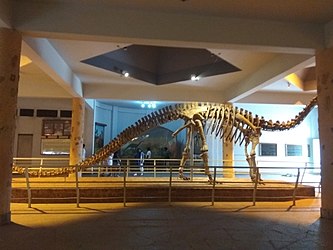
Indian Space Research Organisation is India's national space agency. It serves as the principal research and development arm of the Department of Space (DoS), overseen by the Prime Minister of India, with the Chairman of ISRO also serving as the chief executive of the DoS. It is primarily responsible for space-based operations, space exploration, international space cooperation and the development of related technologies. The agency maintains a constellation of imaging, communication and remote sensing satellites. It operates the GAGAN and IRNSS satellite navigation systems. It has sent three missions to the Moon and one mission to Mars.

The Salar Jung Museum is an art museum located at Dar-ul-Shifa, on the southern bank of the Musi River in the city of Hyderabad, Telangana, India. It is one of the notable National Museums of India. Originally a private art collection of the Salar Jung family, it was endowed to the nation after the death of Salar Jung III. It was inaugurated on 16 December 1951.

Vikram Ambalal Sarabhai was an Indian physicist and astronomer who initiated space research and helped to develop nuclear power in India. Often regarded as the "Father of Indian space program", Sarabhai was honored with Padma Bhushan in 1966 and the Padma Vibhushan (posthumously) in 1972.

Krishnaswamy Kasturirangan is an Indian space scientist who headed the Indian Space Research Organisation (ISRO) from 1994 to 2003. He is presently Chancellor of Central University of Rajasthan and NIIT University. He is the former chancellor of Jawaharlal Nehru University and the chairman of Karnataka Knowledge Commission. He is a former member of the Rajya Sabha (2003–09) and a former member of the now defunct Planning Commission of India. He was also the director of the National Institute of Advanced Studies, Bangalore, from April 2004 to 2009. He is a recipient of the three major civilian awards from the Government of India: the Padma Shri, the Padma Bhushan and the Padma Vibhushan.

Satish Dhawan Space Centre – SDSC, is the primary spaceport of the Indian Space Research Organisation (ISRO), located in Sriharikota, Andhra Pradesh.

Sankara Nethralaya is a non-profit missionary institution for ophthalmic care headquartered in Chennai, India.

The Launch Vehicle Mark-3 or LVM3 is a three-stage medium-lift launch vehicle developed by the Indian Space Research Organisation (ISRO). Primarily designed to launch communication satellites into geostationary orbit, it is also due to launch crewed missions under the Indian Human Spaceflight Programme. LVM3 has a higher payload capacity than its predecessor, GSLV.

Rashtrapati Nilayam formerly known as Residency House is the official winter retreat of the President of India located in Hyderabad, Telangana. Rashtrapati Nilayam was officially opened to the public in March 2023, allowing visitors to explore its vast grounds, thematic gardens, and architectural marvels. The President stays here for at least two weeks during their winter sojourn visit and conducts official business. It is also used as a guest house for visiting dignitaries. It is located in Bolaram in Secunderabad, a neighbourhood of Hyderabad.
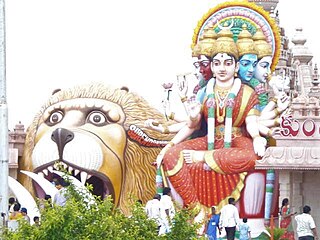
Surendrapuri is a religious tourism destination located near Hyderabad, Telangana, India in the Yadadri Bhuvanagiri district. The 17-acre religious complex includes the Kunda Satyanarayana Kaladhamam - India's first mythological museum, Panchamukha Hanumadeeswara Devasthanam (Hindu temple), Navagraha temples, Nagakoti idol, and Surendrapuri’s iconic two-sided Panchamukha Hanuman-Shiva statue.
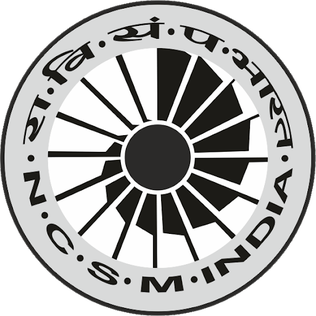
National Council of Science Museums (NCSM) is an autonomous scientific organization functioning under the Ministry of Culture, Government of India for science communication through its network of science museums or science centres spread across India. It is the largest chain of science centers/museums under a single administrative umbrella in the world. There are 24 own science centers or museums and one R & D laboratory and training centre. The NCSM has been built to co-ordinate all informal science communication activities in the museum space in the country.
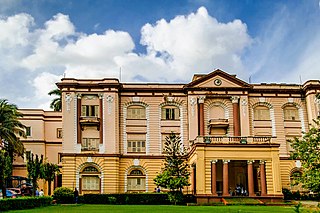
Birla Industrial & Technological Museum (BITM) is a science museum in Kolkata, West Bengal, India. It is a unit under National Council of Science Museums (NCSM), Ministry of Culture, Government of India. Initially under the governmental jurisdiction of the Council of Scientific & Industrial Research (CSIR), BITM is commonly recognized as the precursor of India's science museum concept.

B. M. Birla Planetarium is a large planetarium in Chennai, India. The fifth B. M. Birla planetarium in the country, it is located at Kotturpuram in the Periyar Science and Technology Centre campus which houses eight galleries, namely, Physical Science, Electronics and Communication, Energy, Life Science, Innovation, Transport, International Dolls and Children and Materials Science, with over 500 exhibits. Built in 1988 in the memory of the great industrialist and visionary of India B. M. Birla, it is considered the most modern planetarium in India, providing a virtual tour of the night sky and holding cosmic shows on a specially perforated hemispherical aluminium inner dome. Other Birla planetariums in India include the M. P. Birla Planetarium in Kolkata, the Birla Planetarium in Hyderabad, and the planetariums in Tiruchirapalli and Coimbatore.

The Birla Planetarium in Kolkata, West Bengal, India, is a single-storeyed circular structure designed in the typical Indian style, whose architecture is loosely styled on the Buddhist Stupa at Sanchi. Situated at Chowringhee Road adjacent to the Victoria Memorial, St. Paul's Cathedral and the Maidan in Central Kolkata, it is the largest planetarium in Asia and the second largest planetarium in the world. There are two other Birla Planetariums in India: B.M. Birla Planetarium in Chennai and the Birla Planetarium in Hyderabad.
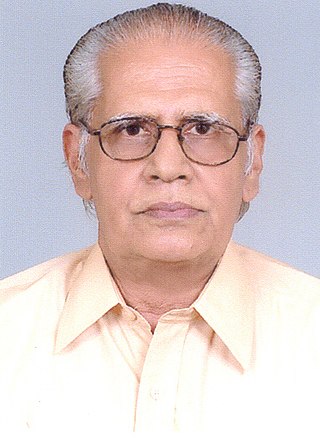
P. V. Manoranjan Rao is a veteran space scientist and author from India. In his career spanning over three decades — including over two decades at the Indian Space Research Organisation's Vikram Sarabhai Space Centre — he has done extensive research in areas including the physics of lightning discharge, ionospheric physics, magnetospheric physics, VLF and ELF wave propagation, electrostatics of launch vehicles, electrostatic charging of communications satellites, EMI/EMC and lightning protection for launch vehicles. He has edited and authored three books on India's space history.
DRDO Young Scientist Laboratories (DYSLs) are five specialised research laboratories located in five different cities of India, inaugurated by the Prime Minister of India on 2 January 2020. Each laboratory deals with a focused area of science - artificial intelligence, quantum technologies, cognitive technologies, asymmetric technologies and smart materials. The labs are located in Bengaluru, Mumbai, Chennai, Kolkata and Hyderabad. As per the norms laid out, everyone, including director, at the labs is under 35 years of age. DRDO Chairman G.Satheesh Reddy conveyed to The Hindu on 3 January 2020 that the laboratories are formally operational.

Pranav Sharma is an astronomer and science historian known for his work on the history of the Indian Space Program. He has curated Space Museum at the B. M. Birla Science Centre. He was the in-charge of the history of the Indo-French scientific partnership project supported by the Embassy of France in India. He is a national award-winning science communicator and has extensively worked in the popularization of astronomy education in India. He is the Co-Lead on the History of Data-Driven Astronomy Project hosted at Caltech. He also serves as the Policy and Diplomacy Advisor to United Nations International Computation Centre, Adjunct Researcher at Raman Research Institute, Scientific Advisor to Arc Ventures, Science Diplomacy Consultant to Indian National Science Academy and Member Secretary for G20-Science20. He is an Associate Member of Astronomical Society of India. He has co-authored the book Essential Astrophysics: Interstellar Medium to Stellar Remnants, CRC Press, 2019.
Kulasekarapattinam Spaceport is the second spaceport of the Indian Space Research Organisation (ISRO), located in Kulasekarapattinam, a coastal village in Thoothukudi district of Tamil Nadu, India. The facility is being constructed over 2,350 acres. As of September 2023, more than 90% of land has been acquired and the groundbreaking was done on 28 February 2024.
Brij Mohan Birla was one of the scions of Birla family and an industrialist and philanthropist. He was the youngest and 4th son of Baldeo Das Birla. He was chairman of Hindustan Motors, Ruby General Insurance, India Exchange Ltd, NBC Bearing and was on board of several other Birla companies. He founded Hindustan Motors in 1942 and NBC Bearings in 1946. CK Birla Group is successor to his branch of Birla family. He was president of Indian Chamber of Commerce in 1936 and the Federation of Indian Chambers of Commerce & Industry for year 1954.
Salem Science Park is an innovative research and development facility located in Pallapatti, Salem, Tamil Nadu, India. Established to foster scientific research and technological advancement, the park is home for planetarium, 80 science models and also has innovation hub to enhance the knowledge of students.


